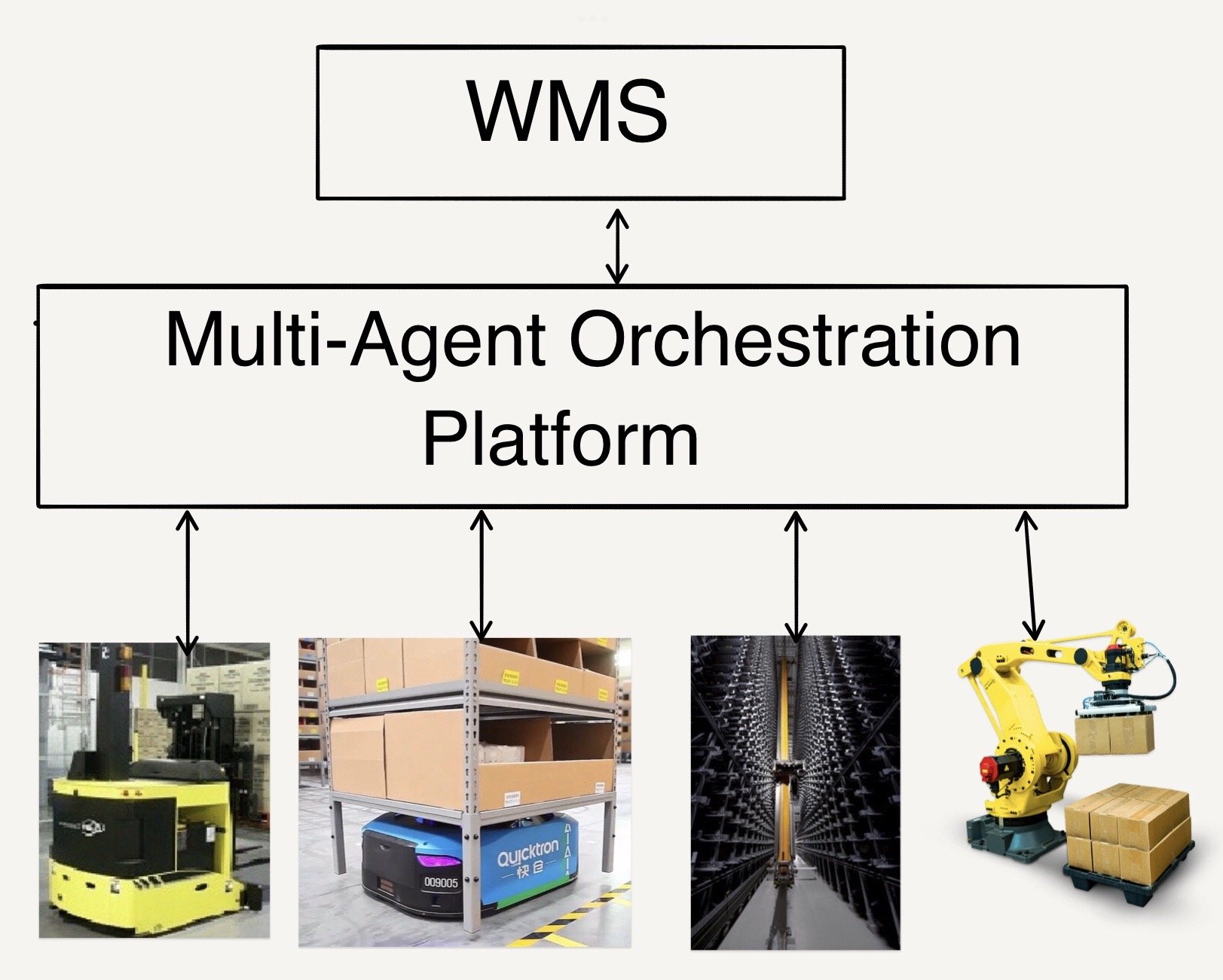Is a Multi-Agent Orchestration Platform Right for Your Warehouse? Let's Find Out
/In recent years, there has been a significant shift towards automation and optimization of warehouse operations. One of the latest technologies for warehouse operations gaining attention is the multi-agent orchestration platform. According to a recent Gartner report, “by 2026 over 50% of companies deploying intralogistics robots in the warehouse will have a multiagent orchestration platform.”
Several Robotic companies - Locus Robotics, CoEvolution, SnapFulfill, and GreyOrange to name a few, already released information about their own orchestration software at this year’s ProMat.
In this blog post, we will explore what a multi-agent orchestration platform is, how it works, and whether your business needs one.
What is a Multi-Agent Orchestration Platform?
A multi-agent orchestration platform is a software system that sits between your WMS and your automation that enables the coordination and interoperability between multiple autonomous agents in a warehouse. These agents could be robots, conveyors, elevators, traditional automation equipment like an AS/RS, or IoT devices that need to work together to perform tasks in the warehouse.
The orchestration platform acts as the brain that coordinates and communicates between the various agents to ensure that they are working together efficiently and effectively. It uses artificial intelligence and machine learning to optimize the workflow, allocate tasks and resources, and solve any problems that may arise in real-time. Without an orchestration platform, a warehouse operation with agents from multiple vendors will have siloed solutions that can lead to inefficiencies, and ultimately you will not be able to maximize the return on your automation investments.
How Does a Multi-Agent Orchestration Platform Work?
A multi-agent orchestration platform uses a variety of technologies to manage the warehouse operations. It typically includes the following components:
Agent Framework: This is the software framework that enables the agents to communicate and work together. It includes a set of APIs and protocols that enable the agents to send and receive messages, share data, and collaborate on tasks.
Communication Infrastructure: This is the network infrastructure that connects the agents and enables them to communicate with each other. It includes a variety of communication protocols such as Wi-Fi, Bluetooth, RFID, and GPS.
Centralized Control: This is the central brain of the platform that manages the workflow, allocates resources, and makes decisions based on the data received from the agents. It uses machine learning algorithms to optimize the workflow and respond to real-time conditions.
Do You Need a Multi-Agent Orchestration Platform?
Assuming your business has a high volume of orders, workflow complexity, and need to reduce costs then there is a good chance you need a multi-agent orchestration platform. If you automate without an orchestration platform, as technology evolves you will add an increasing number of automated agents from multiple different vendors.
This piecemeal approach to automation results in automation silos where systems are connected to each other via custom integrations which are difficult to upgrade or respond to customer demands. And while each ‘discrete silo of automation’ may perform well, the lack of system-wide interconnection will prevent you from maximizing the full potential of your automation investments.
A multi-agent orchestration platform is a powerful tool that can help businesses optimize their warehouse operations, improve efficiency, and reduce costs. By enabling multiple agents from different vendors to work together seamlessly, businesses can automate complex tasks and workflows, leading to increased productivity and profitability. If you're running a warehouse or distribution center and dealing with a high volume of orders or complex workflows, it might be worth considering a multi-agent orchestration platform to help you streamline your operations.












